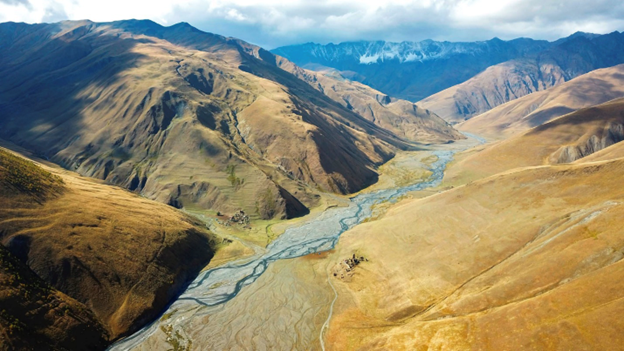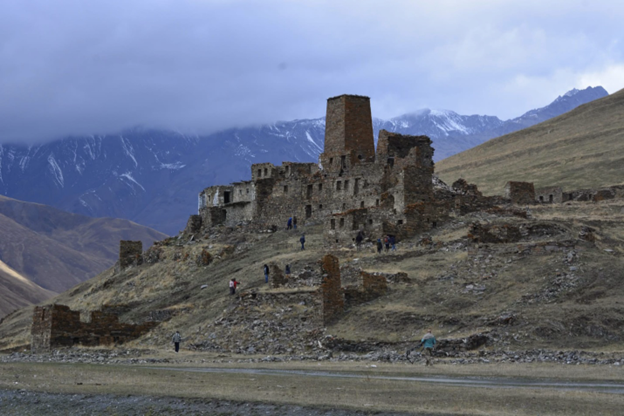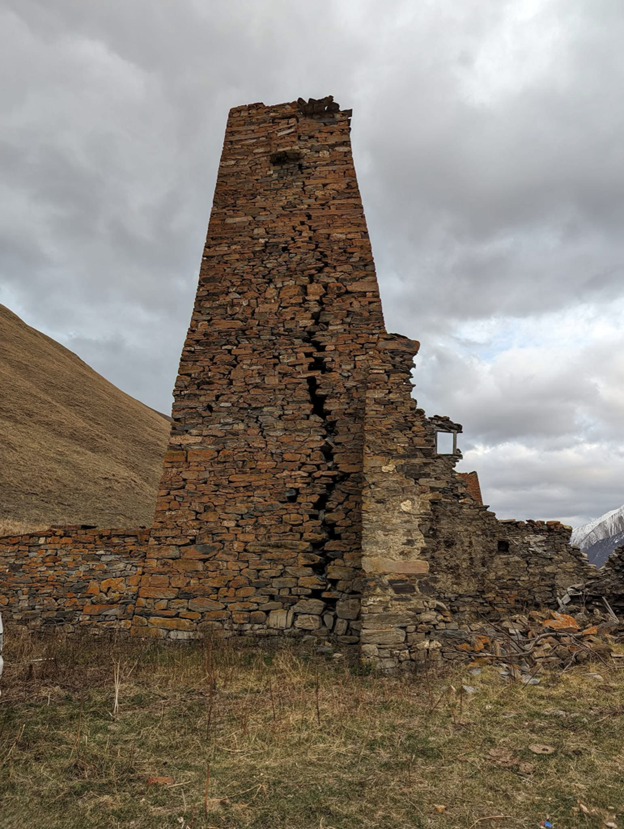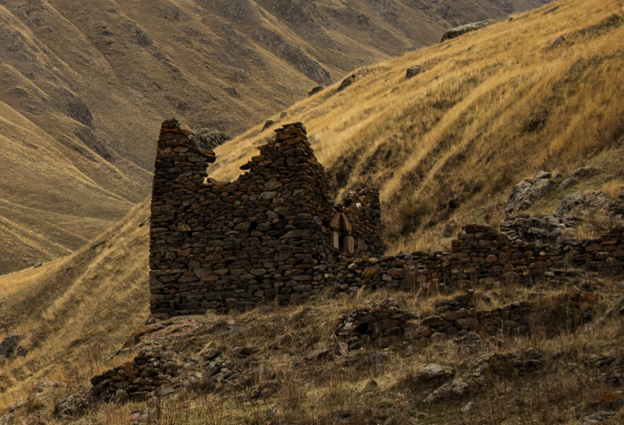
Truso Record
"Borjomi" is not just water—it is a natural heritage that reminds us that true wealth is hidden in nature. It not only nourishes us with minerals but also offers the experience of a place where the connection between humans and nature is still palpable in Georgia.
Here, we will share one of the most remarkable stories of such connection.
If you want to see the life of the North Caucasus and Georgia’s mountainous regions, if you love hiking, if history interests you, if you are looking for a new adventure, or if you simply want to see something in Georgia that you have never seen before, then you must visit Truso Valley.
When you arrive in Kazbegi, you can ask anyone how to get to Truso, and they will gladly give you advice on how to prepare and what not to miss. Planning and preparation (as always) will be essential.
So, you enter Truso Valley.

Truso Valley
The first place that greets you is the village of Abano. It is a beautiful village. Although it is called a village, no one actually lives there (just like in nearly twenty other villages in the valley). Only a monastery remains, where monks reside—just as most monks do in Georgia’s highlands, in beautiful natural surroundings, in a kind of light solitude (if such a thing exists), following a strict routine, and always ready to welcome travelers.
In general, a sense of readiness is felt at every step in the valley. Even in pre-Christian Rome, the strategic importance of Truso Valley was well understood as a defense line against northern invaders. And, as always, this primarily influenced architecture—but we will discuss that further below.
A few hundred meters deeper into the valley from the village of Abano, there is an active border checkpoint, where having your documents in order will come in handy. It is a small outpost, and the guards serve as border protectors do near Georgia’s more "tense" borders—under conditions that may not seem comfortable from a tourist's perspective but with remarkably good spirits and an unwavering love for their country.
Sometimes, they roast sunflower seeds on a small stove and will insist on offering you some. If you spend more time with them, they will point you to a nearby spring and convincingly explain why you must try its water. For example, I was given this explanation, and tell me if it doesn’t sound convincing: "Whenever we get stomach aches from eating canned food all the time, we drink from this spring. Our stomachs rumble for a minute or two, and then we immediately feel better."
The stones around the spring are reddish in color, but this does not surprise you because you have already seen Truso’s famous travertines along the way and know that the spring is mineral-rich, or as the locals say, it "bubbles."
Truso Valley is also home to the "Bottomless Lake," which, like the springs, is entirely filled with mineralized, carbonated water. Unlike the springs, though, here you can actually see the bubbling water with your own eyes (locals also call it "Bubbling Lake").
From the border outpost, you can already see the first abandoned village deep in the valley—Burmahevi. It seems as if it was intentionally positioned to look impressive from the outpost, so that if you arrive unprepared and cannot proceed further, you will be compelled to return again.

Village of Burmakhevi
From a distance, the first thing you notice is what Georgia’s mountain people take pride in—the towers remain standing the longest.
It is hard to believe that just 30 years ago, Truso’s villages were still inhabited and that people lived in houses that are now reduced to mere walls. Instead, you get the impression that the area has been abandoned for centuries. This is largely due to the harsh winters, but locals also say that tourists and shepherds share some of the blame.
(So, if you decide to visit the valley, keep in mind that for your own safety, it is best not to damage what has to survive yet another winter.)
As you follow the Tergi River deeper into the valley, you see that almost every hilltop has a tower. Not long ago, every one of these spots was home to a village.
If you are traveling with someone who regularly visits Truso, you will undoubtedly hear remarks like:
"Last year, this crack wasn’t here."
"This wall was still standing last year."
"The towers hold up better."
"Next winter, it won’t survive."
This only strengthens your desire to go further into the valley, to see all the villages while their traces still remain.

The Village of Resi: A Forgotten Record
Gradually, as you ascend (after all, you are nearing the source of the Tergi River), the oxygen levels drop, and you find yourself tiring faster than you expected. But it is still worth reaching the end of the route—the village of Resi, which stands at an altitude of 2,405 meters above sea level.
What does it mean for a village to exist at 2,405 meters above sea level?
It means that at one time—not long ago, in fact, until 1989—Resi was the highest permanently inhabited village in Europe.
It was higher than Ushguli (the previous record-holder) and higher than Bochorna (the current record-holder).
Now, however, Resi stands empty, just like the rest of the valley.

Village Resi
Finally, let’s just say that getting to Truso Valley is difficult, but not impossible.
Bad roads and harsh weather are not the biggest obstacles—you can always hike several dozen kilometers or choose the right season. But if you do not fill out a special application form several days in advance and notify the national security authorities responsible for border safety about your route, you will only get to see the beginning of the valley.
That means you will have to turn back, carrying only 10% of the impressions that await further ahead.
So, you arrange your paperwork, plan your route, and set off.